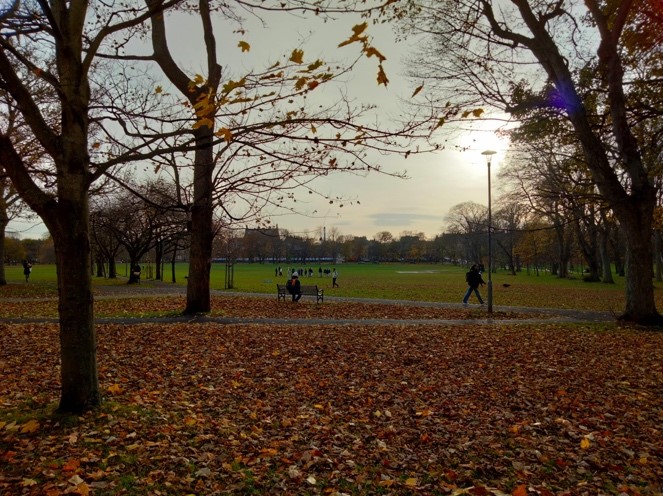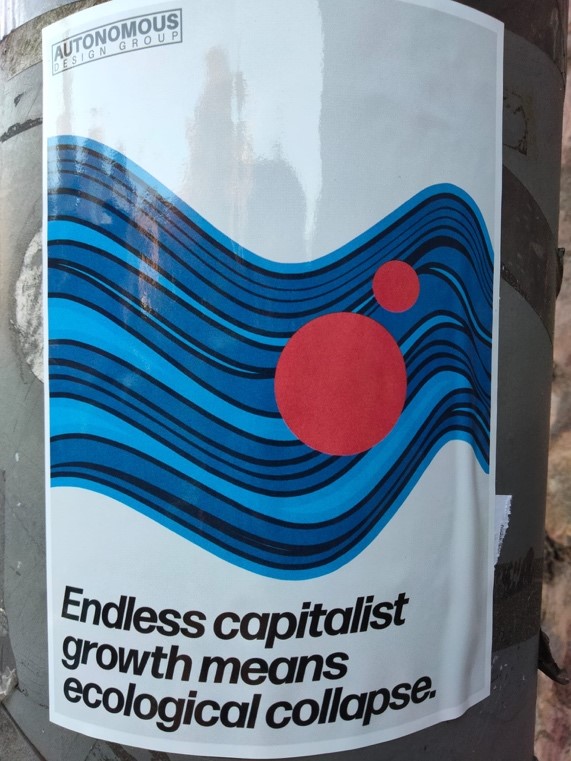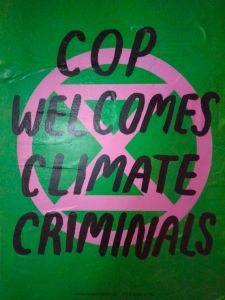25th November 2021
This month’s blog is a sort of a wrap-up to my visit to Edinburgh that sadly is about to come to an end. Here, at the University of Edinburgh, I had the opportunity to meet, learn, exchange, and think together with other PhD students, as well as to participate in Prof. Angela Dimitrakaki’s course, ‘Theorising Contemporary Art’, that greatly advanced my thinking of art in the social and political realm. Further, I realise that I was very lucky with the timing of my visit here. Not only because it started to snow (admittedly, excitement is well legitimated given this might become a rare phenomenon to witness in the future), but also because this was a chance to be physically present and observe the preparation for and bustle around, the 2021 UN Climate Change Convention that was hosted in Glasgow and attracted world leaders and vast civil demonstrations. What I found interesting during this period around the convention was the local response and organization to the event that took place at a time when an additional wave of Covid is imminent. Upon the backdrop of extended social aid due to Covid, stronger links between economic systems and ecological jeopardies appear to be made and voiced on a grassroots level. However, the result in a general is withdrawal and a return to normal. On this issue I would like to contemplate here (with awareness of the risk of exhausting my readers, being it another Covid-related piece of text).
Arriving in Edinburgh, I was curious to learn how the prolonged lockdowns have influenced life in the city. Scotland, in a different manner than England, has enforced longer lockdowns and, when possible, allowed freedoms, though gradually and vigilantly. When arriving in a new city, I usually walk across it to become more familiar with the new place. I did so in very walkable Edinburgh and noticed that the streets were packed with people. I wondered whether this is the city’s natural flow or is it the aftereffect of an endured lockdown regression. My flatmate confidently confirmed the latter and we continued our talk about his observation of the city’s change during the tide of Covid and my reception of what I can now understand as being the remnants of such modifications.
All the while that uncertainty environed what is known today about the virus capacity to spread, distance measures had to be taken. In response to that, the council of Edinburgh extended narrow sidewalks, and at the expense of the roadway allowed more space for pedestrians. The parks, well used before the pandemic (though under current circumstances have received a special appreciation), became a symbol of the necessity of pro-bono public spaces to accommodate all, especially those who have stumbled into new urgencies. Like many other cities in the world, the city of Edinburgh collaborated with third sector organisations and allocated funding for the supply and distribution of food for vulnerable groups.

The Meadows, an expansive lawn in the heart of the city accommodating citizens’ strolling and wandering. Probably the most precious resource in times of need for open-air places that are free of charge and open to the gathering of all.
Such initiatives (and many others), coming as an immediate response to the crisis, offer a glance at the array of services that can be possibly offered on behalf of public institutions for the well-being of citizens. For a short while, the city demonstrated how bureaucracy can be bypassed and progressive actions be taken toward a condition where citizens’ well-being is of utmost priority. The direct expansion of civil and social aid, partially bringing into practice more utopic approaches to economy and social order, combined with the bustle and excitement that flowed all the way from Glasgow to Edinburgh the capital fed into the conviction that changes do happen. Increasing utterances in the forms of posters, stickers, news articles, and small talks make non-work discourses mainstream again, convey coherent links between capitalism and ecological destruction and the wealth of the few, and accentuate the absurd in our day-to-day endurance of normalised injustices within a capitalist system.


More up-to-date city decorations for a festive season. Stickers and posters produced by the Autonomous Design Group (left) and Extinction Rebellion movement (right). Both self-organised institutions.
Nevertheless, at the time of writing, COP has finished, its aftermath being evaluated on a range between major failure to moderate success; and a new Covid variant now spreads and threatens to destabilise our systems. Taking my walk to the university a week ago, I have noticed that sidewalks were brought back to their initial width, a somewhat symbolic performance to the backlash, withdrawal, and return to ‘business as usual’. This is astonishing to me, how repressive and forgetful and blindfold, humanity can be, on a short-term focal level, ignoring the disaster that threatens to extinguish future generations with the excuse of safeguarding financial stability – a rationale that is telling of the old-world mindset of generations who did enjoy growth when resources were still abundant. This is the struggle of young generations to save our extorted planet. Hopefully, they will succeed in bringing on board revolutionary solutions to this emergency, using what they know of the world from being born into a society with a precarious vision of the future on a resource-depleted planet. Hopefully allow changes to happen, fast.

